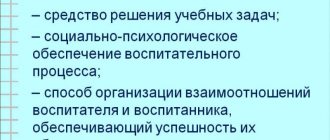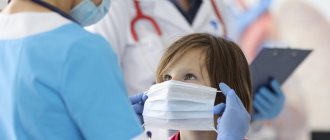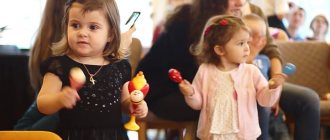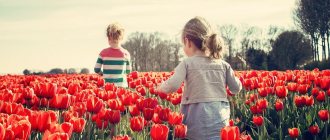Workshop for educators “Love for nature”
Transcript
1 Workshop for educators “Love for Nature” Goal: to increase the level of professional skills and creative potential of teachers in the field of environmental education. Tasks. 1. Clarify the existing knowledge of teachers on environmental issues (phenomena of living and non-living nature, plants, animals); 2. Identify the ability to use acquired knowledge by nature in different types of activities; 3. Develop cognitive interest among teachers; 4. Cultivate a love for nature, for your native land. Workshop plan. 1. Environmental training for teachers. 2. Teams business card. 3. Warm up. 4. Blitz competition 5. Solving pedagogical situations 6. Creative competition. 7. Music competition. 8. Results. Progress of the seminar. 1.Environmental training for teachers. Presenter: - Good afternoon, dear colleagues! Today I will conduct a workshop for you on the topic “Love of Nature.” The remarkable teacher V. A. Sukhomlinsky wrote: “Man was and will always remain a son of nature, and what makes him related to nature should be used to introduce him to the riches of spiritual culture.” The world surrounding a child is, first of all, the world of nature with an endless wealth of phenomena, with inexhaustible beauty. Teaching children to see the beauty of the surrounding nature, cultivating interest and respect for it is one of the main tasks of educators and parents. The amazing world of nature He greets the child with a sea of sounds and smells. Thousands of different riddles and secrets. Makes you stop, listen, take a closer look, think. The field, the meadow, the quiet forest stream, and the tiny puddle have their secrets. Getting to know nature awakens a child's curiosity. Nature has great cognitive capabilities: it makes it possible to immensely expand a child’s horizons and develop the ability to compare. Nature is the most important means of education and development of preschool children. How many discoveries a child makes while communicating with her! Every living creature seen by a baby is unique. Diverse and
2 natural materials (sand, clay, water, snow, etc.) with which children love to play. Preschoolers communicate with nature at different times of the year, when fluffy, white snow lies around, and when the gardens bloom. No didactic material can compare with nature in terms of diversity and strength of developmental impact on the child. Today’s seminar will allow each teacher to test their competence in environmental education and, perhaps, improve it a little; share experience in using various forms of activity in order to increase the effectiveness of the pedagogical process on this topic. Finally, to establish closer contact between our kindergarten teachers. 2. Teams business card. Presenter: - In order to make it convenient to address the teams, I propose to confer for 2 minutes and come up with a name for the team and introduce it. 3.Warm up. Presenter: The influence of nature on the development of a child’s personality is associated with the formation of certain knowledge about its objects and phenomena. Therefore, if we talk about the tasks facing a teacher introducing children to nature, the first among them will be the formation of an elementary system of knowledge about nature in children. The second task is to develop children’s labor skills and abilities. The third task is to develop children's love for nature. All of the listed tasks facing the teacher are closely interconnected; they must be considered and solved in a complex manner. And today we will talk about this. So what is ECOLOGY? (Answers from teachers). “Ecology is the science of the relationships of plant and animal organisms and the communities they form between themselves and the environment.” Give a definition of what environmental education for preschool children is? (This is an introduction to nature for children, which is based on an ecological approach, in which the pedagogical process is based on the fundamental ideas and concepts of ecology.) Why, in your opinion, should environmental education be practiced from preschool age? (Because it is in preschool childhood that the foundations of a correct attitude towards the world around us and value orientations in it are laid.) The role of the teacher in the environmental education of preschoolers? In order to develop in children the need to communicate with representatives of the animal and plant world, cognitive interest in them, the ability to see and understand beauty, the need for self-expression in creative activities, conditions are created in kindergarten where children can, with daily, free access, replenish their knowledge , realize the need to communicate with nature.
3 What kind of work, in your opinion, should be done here with parents? (When working with parents on environmental education, I use both traditional forms (consultations, conversations, exhibitions of crafts made from natural materials, drawing competitions, wall newspapers, joint landscaping of the kindergarten territory, distribution of colorful booklets), and non-traditional ones - this is entertainment, KVN, business games, questionnaires, excursions) Name the elements of the subject-oriented development environment of a kindergarten used for environmental education of preschool children. (Participants take turns naming: a corner of nature: models and diagrams; visual material; nature calendar; files of labor, observations and experiments; laboratory; educational panels; methodological, encyclopedic and fiction literature; ecological trail; mini-vegetable gardens in group rooms and vegetable garden on the territory; environmental collections and mini-museums; winter garden; plant passports, etc.) What should be in a corner of nature? (Plants, animals, birds, fish, equipment for caring for the inhabitants of the corner, food for the inhabitants; nature calendar; children's drawings.) What should be on the kindergarten site? (Trees, shrubs, flower beds, vegetable garden.) What methods are used for environmental education of children? (Visual, practical, verbal.) List visual methods of environmental education of children. (Observations; excursions; viewing paintings; demonstration of models, films) List the practical methods of environmental education of preschool children. (Game; elementary experiments; modeling.) List the verbal methods of environmental education of preschoolers. (Stories from the teacher and children; reading works of fiction about nature; conversations) Name the main method used in the environmental education of preschoolers. (Observation.) List the forms of organizing work with children on environmental education. (Classes, excursions, everyday life (walks, including targeted ones; work in a flower garden, vegetable garden, corner of nature), environmental holidays and entertainment, basic search activities (only at an older age). On the tables in front of you are cards with a task, try to rank in order of importance the following principles for creating an ecological corner in kindergarten (put the most relevant, in your opinion, position first): 1. The presence of as many species of plants and animals as possible; 2. The presence of inanimate objects (soil, stones , shells, etc.);
4 3. Providing comfortable conditions for all representatives of wildlife, the habitat and care they need; 4. Safety (absence of dangerous species of animals, insects, plants); 5. Providing opportunities for children to care for plants and animals; 6. Providing children with the opportunity to observe wildlife; 7. Providing children with the opportunity to experiment with inanimate objects; (4, 3, 1, 2, 6, 5, 7) 4. Blitz - competition Presenter: - People have always been interested in weather. The closer a person was to nature, the more his life depended on rains and droughts, on frosts and thaws. And although these long-term observations, reflected in signs and riddles, proverbs and sayings, are not all accurate, they can be fully used to familiarize children with nature, folk traditions, and to develop their creative abilities; Observations provide an opportunity to experience the joy of discovery and feel the taste of research work. Weather forecasting based on folk signs fosters respect for traditions and ensures the connection of generations. Presenter: - I offer you a small blitz - a competition “How plants and animals predict the weather.” I remind you of the beginning of signs of future weather in the behavior of plants and animals, and you finish the line. — The spider intensively weaves its web (for dry weather). — It’s already warming up on the road (before the rain). — Swifts, swallows fly low (they foretell rain). — Mice come out from under the bedding onto the snow (a day before the thaw). — The dog rolls on the ground, eats little and sleeps a lot (towards a blizzard). — When the bird cherry blossoms (toward cold, frost). — If the grass is dry in the morning (expect rain in the evening). — In the morning, the woodlouse blossomed and remained open all day (in good weather). — Flowers before the rain (they smell stronger). — The cat curled up into a ball (towards cold weather). — A crow cries in winter (towards a snowstorm). — Frogs croak (for rain). — Sparrows bathe in dust (for rain). — A star was born near the moon (towards warming). Host: - Can any of you remind me of other signs? 5. Solving pedagogical situations. Presenter: - Each team must solve the following pedagogical situation. (Give each team 1 situation). You have 5 minutes to decide. 1. Four children from five to seven years old are playing in a forest clearing. The smallest one shouts: “Let's catch a butterfly and set its wings on fire!” A man walking by and hearing this call stops the boy and
5 asks: “Why do you set fire to a butterfly’s wings?” He is silent for a bit and answers: “Just like that.” How can one explain such cruelty of children? What methods and techniques for educating preschoolers to respect nature are necessary in this situation? 2. You go to work. Two mothers are talking peacefully on the path. At this time, their children nearby are breaking the branches of a young tree. Both already have a large armful of them in their hands. Do you think children are simply naughty or did no one tell them that they should not harm plants? Will you silently pass by, condemning the mothers /children/ in your heart, or will you stop and talk to the mothers /children/? 6.Game. Host: - And now your attention is invited to play. Comic game "Trick Endings". I read out the poem, and you quickly answer: 1. Any girl knows what a carrot is. (blue, orange). 2. Everything is covered in white snow, which means it’s coming. (summer Winter). 3. At night, each window is dimly illuminated.. (sun, moon). 4. The leaves fell off the maple tree and it became autumn. (green, naked). 5. There are four lions under the tree, one has left, there are left.. (two, three). 6. The mouse counts the holes in the cheese, three plus two equals.. (four, five). 7. He beat on a pine tree like a drum in the forest. (ram, woodpecker). 8. On the fence in the morning, crowing. (kangaroo, rooster). 9. As soon as the daylight went out, it faded into darkness. (rooster, eagle owl). 10. From a palm tree down, to a palm tree again, he deftly jumps. (cow, monkey). 11. In the swamp at full speed, croaking loudly. (rooster, frog). 12. The whole street heard it mooing. (chicken, cow). 7.Creative task. Presenter: - A teacher is a creative profession. And what is creativity without imagination and invention? The next task is creative. Each team must draw a proverb so that the opposing team can read it. 1.Spring is red with flowers, and autumn with pies. 2. I saw a rook and welcome spring. 3. Prepare a sleigh in the summer and a cart in the winter. 4. You can’t even pull a fish out of a pond without difficulty. 5. You love to ride and love to carry sleds. 6. A bird in the hand is better than a pie in the sky. 7. The apple doesn’t fall far from the tree. 8. Music competition. Teams are invited to take turns performing an excerpt from songs about flowers. 9. Practical part.
6 And now I want to tell you one legend about one flower. She came to us from ancient times. They said that happiness was contained in the golden bud of this flower (yellow tulip). No one could reach this happiness, because there was no such force that could open its bud. But one day a woman with a child was walking through the meadow. The boy escaped from his mother’s arms, ran up to the flower with a ringing laugh, and the golden bud opened. The carefree children's laughter accomplished what no force could do. Since then, it has become a custom to give these flowers (tulips) only to those who experience happiness. This flower is also said to bring good luck. We ourselves love nature and educate our children to have a humane attitude towards it. Therefore, I suggest you make this flower with your own hands using the origami method and may good luck and happiness be in every corner of our kindergarten. (Teachers complete the task). Conclusion. Presenter: - With this our workshop has come to an end, I hope that it was interesting and useful for you. You have refreshed your memory about environmental education. I wish you success in your work. For friendship, for smiles and for meetings. We inherited the planet. We are bequeathed to protect this world and this amazing land. Thank you all for your participation!
7 Workshop “Love for Nature”
(Roman Rugin)
Continue the folk sign associated with weather phenomena.
- The cat curled up into a ball - it’s getting colder
- A crow cries in winter - a blizzard
- Frogs croak - for rain
- Sparrows bathe in dust - for rain
- A star was born near the moon - warming
- Dogs are rolling - to a blizzard
Each teacher must solve the following pedagogical situation. (Distribute to each teacher according to the situation). You have 5 minutes to decide.
1.
Alyosha covers something in his palm, looks into it and smiles tenderly. Olga Nikolaevna turns to the baby: “What do you have there? Show me! Ugh! Quit it now! " A small furry caterpillar falls from the palm of your hand onto the asphalt. Someone's foot mercilessly stepped on her.
Name the teacher's mistakes. What would you do in this situation?
2.
In the kindergarten area, girls play at the store and replenish the assortment of “products” by picking off plants: pods of yellow acacia -
“beans”, chamomile heads - “sweets”, etc. Irina Petrovna came up and praised: “Well done! Well thought out!
Name the teacher's mistakes. What would you do in this situation?
A teacher is a creative profession. And what is creativity without imagination and invention? The next task is creative. Each teacher needs to draw a proverb so that other teachers can “read” it.
1.Spring is red with flowers, and autumn with pies. 2. Prepare a sleigh in the summer and a cart in the winter.
3. You can’t even pull a fish out of a pond without difficulty. 4. If you love to ride, you also love to carry a sled. 5. A bird in the hand is better than a pie in the sky.
6. The apple doesn’t fall far from the tree.
Teachers take turns performing an excerpt from songs about nature (“Clouds, white-maned horses”, “If only there were no winter”, “Grasshopper”, “Smile”. “It’s fun to walk together” “There was a birch tree in the field”)






